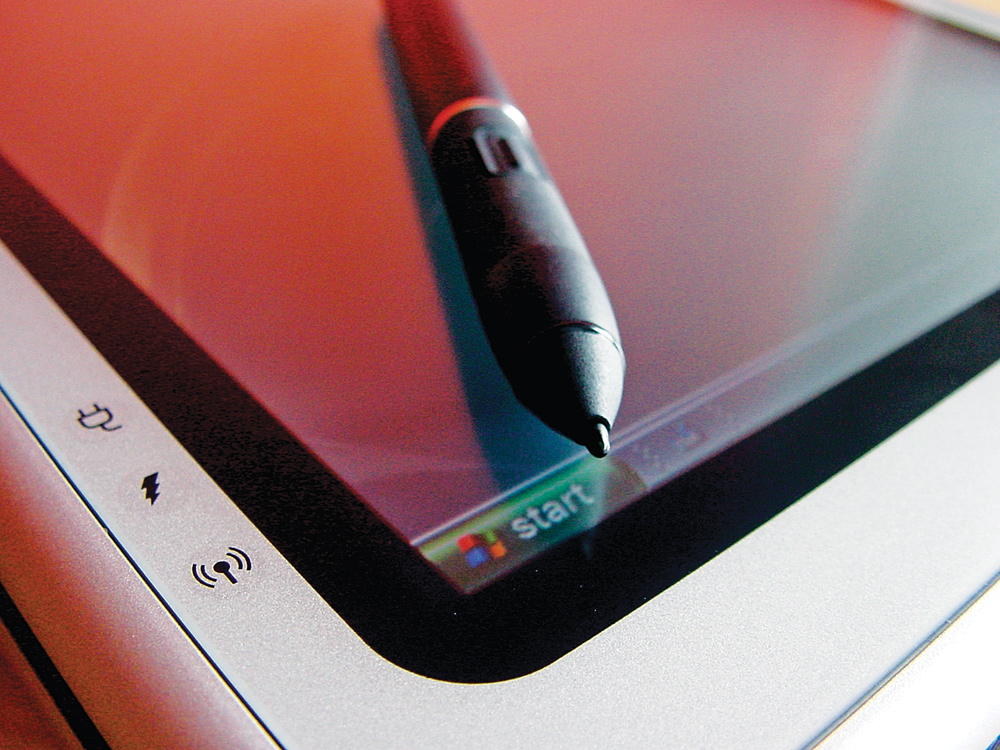Raymond Kwan
Senior Staff
After obtaining your list of textbooks, you hit the bookstore, but then it hits you in the wallet: textbooks are expensive. They can also be a pain to carry all at one time.
Fortunately, there may be a solution. The electronic book (or eBook) is increasingly becoming an attractive option for readers everywhere. Ever since Michael Hart founded the Gutenberg Project digital library in 1971, eBooks have drawn attention for their convenience and affordability.

There are many advantages to using an eBook instead of a textbook.
As digital reading material, several eBooks can be downloaded onto a single, lightweight device called an eReader or viewed from a web browser on your existing laptop, home computer or tablet (e.g. iPad) from virtually anywhere with internet access, and can then be viewed or downloaded at any time.
Physical books, on the other hand, require that one visit a bookstore or wait days for an online order to be delivered. Paper books are also generally more expensive than eBooks; many electronic works are offered at super-low prices – some are even free, depending on the publisher. Another issue is the actual volume of paper in textbooks: it’s not surprising that books are heavier and assume a larger profile than a typical eReader, making running between classes more cumbersome.
You’re even covered if you like to highlight or write notes in your textbook. Certain eReaders and applications such as the Kindle app for Apple’s iPad allow you to highlight text and type clear, easy-to-read notes.
These features are making eBooks increasingly popular. The New York Times reported that from April to June 2010, online retailer Amazon.com saw 143 eBooks purchased for its Kindle eReader for every 100 hardcover books. In July, that figure rose to 180 digital books for every 100 hardcovers.
York University students are also noticing this trend. Since York’s Bookstore began offering eBooks two years ago, the interest in the medium has grown, with more and more students inquiring about them.
“I wouldn’t call it a ‘big hit’ yet, but it’s growing as the market is growing,” said York’s director of bookstore and printing services Steve Glassman.
“There are a few titles that you can buy online, and we use our shared digital platform with 22 other stores to sell them online through something we cooperatively developed called Campus eBookstore,” he added.
From the bookstore’s website, York students can browse and download just over 100 titles.
While the advantages of eBooks are clear, there are several disadvantages that may cause some to give them a second thought.
To view an eBook, you must either purchase a pre-programmed reader or download an e-reading program or app onto your computer. These programs come with Digital Rights Management (DRM) techniques designed to prevent piracy and mass distribution. For example, some eReaders are programmed to terminate eBooks after a few months.
“There’s [programming] embedded in the reader that ensures that the eBook disappears. It’s not necessary for every eBook that you buy, but it’s what college textbook publishers are doing,” said
Glassman.
“We have only the ability to frankly express some displeasure but it’s the publisher’s property and they determine how they publish eBooks,” he added.
Some publishers offer access codes to view eBooks online, but those expire as well. Access codes subscriptions from Campus eBookstore last six months to two years. Furthermore, purchases of access codes don’t always come with eBooks and generally they cannot be resold or shared with, say, a fellow student.
“The true idea of ownership on a lot of electronic media is not there. A lot of people assume that there is ownership but there isn’t; it’s more of a lease,” said York Bookstore senior text associate Sasa Nestorovic.
Many publishers do not allow their eBooks to be printed either. According to www.ebooks.com, eBooks of the Adobe format can be printed, but even that’s not guaranteed, as certain publishers may decide to implement DRM schemes to prevent this. This takes away the ability to buy used books or borrow from a friend.
Formats are another problem, as there are too many of them. No single universal format exists for publishing eBooks, causing compatibility issues for readers using a particular eReader and limiting the availability of certain eBooks.
Furthermore, eBooks may be paperless, but eReaders may not be as environmentally friendly as you might think. According to The New York Times, it takes 33 pounds of minerals and 79 gallons of water to produce the batteries and circuit boards for an eReader, compared to two gallons of water and two-thirds the minerals to produce a book made from recycled paper.
Manufacturing an eReader also consumes 100-kilowatt hours of energy, emitting 66 pounds of carbon dioxide, while a paper book only needs two-kilowatt hours and produces 100 times fewer greenhouse gases.
Students already shell out lots of money toward school for tuition, food, transportation, residence and of course, textbooks, followed by repayments for student loans after graduation. Cost is almost certainly a factor for all.
When determining whether eBooks are cost effective, consider how many of the books you’ll need are available as eBooks, what format they are, what program is needed to read them and whether or not you’ll need to buy an eReader.
Whether it’s a Kindle, Kobo or a tablet, eReaders are far more expensive than a single book, often costing hundreds of dollars. If you already use a laptop you can download the appropriate eReader program and read away. If not, consider the total cost of textbooks versus the cost of the eReader and eBooks or access codes.
Your learning style might come into play as well. Some people just prefer the old-fashioned paper book. It can be shared and photocopied, and you don’t have to worry about it getting erased because of DRM or losing it because the eReader itself is damaged. And unlike eBooks, you can sell your textbooks when you’re done with them.
Digital textbooks may be in education’s future


